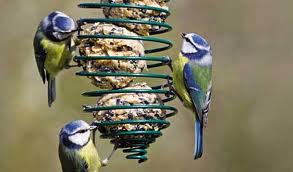





If you want to have both an attractive garden and a wildlife refuge, you will need to do some careful planning before you start. Decisions have to be made as to which species are really welcome in your garden and which you would rather avoid, the types of habitat you will enjoy tending and the wild flowers you want to grow. Your plan should be for a lovely garden in which many plants and animals will feel at home.

Before doing anything, try to find out which animals are already in residence in your garden and might be disturbed if you start making changes In a large garden, this may well take a year as you wait to see which plants come up and whether they attract bees and butterflies. Hedges, shrubs and trees should be carefully checked for nesting sites, and a watching brief kept to see who uses them. Visitors to a well-stocked bird table will indicate which birds are in your area and might like to take up residence, and it will also attract squirrels if they are in the neighbourhood. Check, too, on nocturnal life, including moths and hedgehogs, slugs and snails. Ponds and streams can be checked for frog- and toadspawn and a net can be used to discover the range of aquatic life that is already present.
Your soil type (acid, neutral or alkaline) — this will affect the type of plants you can grow successfully.
The available space — do not be over-ambitious with your scheme; use plants of an appropriate final size and shape.
Current residents — before trying to attract new species of animals or insects, make sure the ones already living in the garden are well catered for and likely to remain.
In all the effort about finding about wildlife, do not forget that your garden is your family’s outside room and needs to be designed as a place in which all the members of the household can relax and enjoy themselves. Make lists of what everyone wants, and consider which of the requirements might be met. Find out if anyone has any strong feelings about wildlife — if one family member loathes snakes, then it is best not to encourage them.
Draw a plan of your garden either by using an existing plan or by measuring the garden with a tape and transferring the measurements onto paper using an appropriate scale. A scale of 1-2cm to represent 1m (or 1 in for 1 yd) fits most gardens onto a convenient-sized piece of paper. This will give you an idea of the amount of space there is for different features; then you can start allocating space for specific purposes, such as a terrace next to the house, a grass area or lawn beyond, and hedges along the boundaries.
Before any planting is undertaken, you need to find out which plants will be happy in your garden; this will depend on the type of soil, the amount of sun or shade and the underlying drainage. It is also useful to know the depth of topsoil: a deep, rich topsoil will be wonderful for growing vegetables but useless for a wildflower meadow. A shady, damp garden will be good for woodland edge or wetland habitats but not so useful for attracting bees and butterflies.
Like any good potential host, you need to find out all about what your intended guests enjoy in the way of sleeping arrangements, food and drink. Hedgehogs, for instance, need safe hibernating nests of grass and leaves, plenty of beetles and caterpillars to eat and accessible water. Discover all you can about the requirements of different species and see how they could be met by creating a variety of habitats within your garden space and then furnishing them with a few home comforts, perhaps a bird table for birds and bowls of bread and milk for hedgehogs.
All gardens, even those that appear quite wild, will need some maintenance, even if it is just an annual hacking back of the undergrowth. Decide on who is going to do it, remembering that if someone enjoys mowing grass it can be considered a spare-time hobby, but if they detest mowing it is always a chore.
Copyright © www.100flowers.win Botanic Garden All Rights Reserved